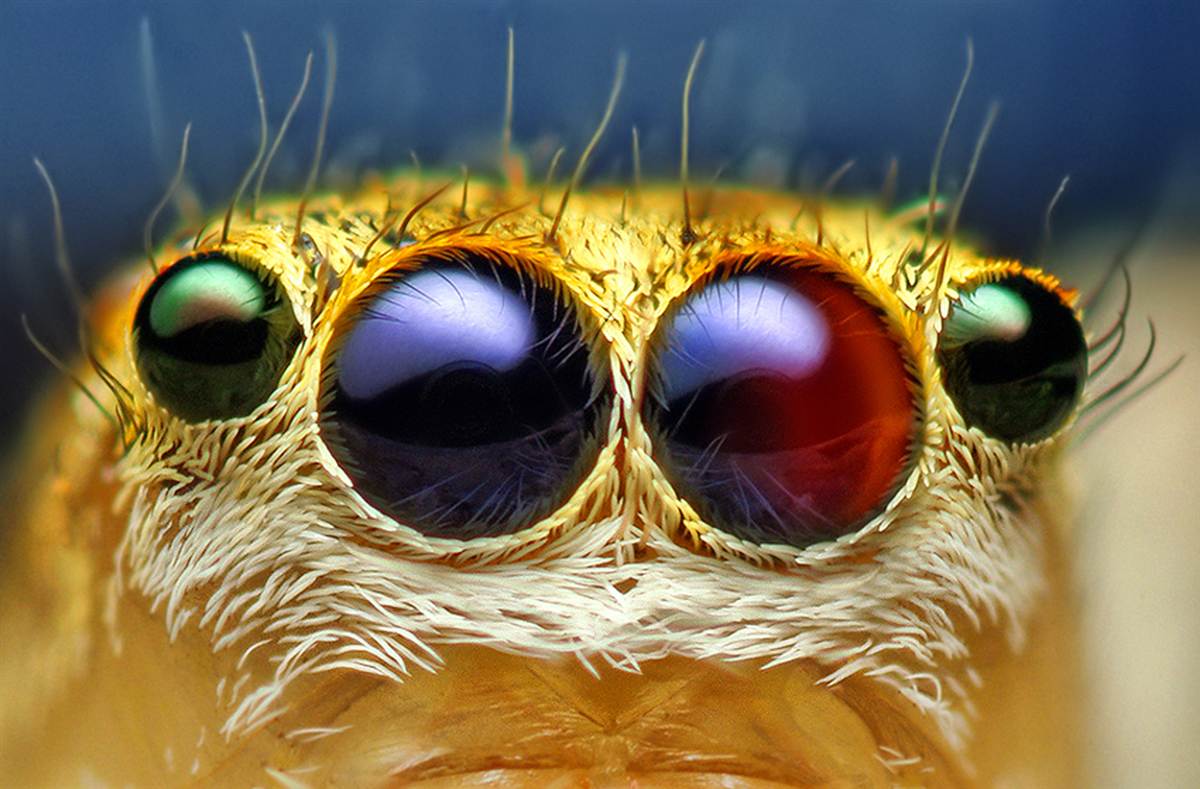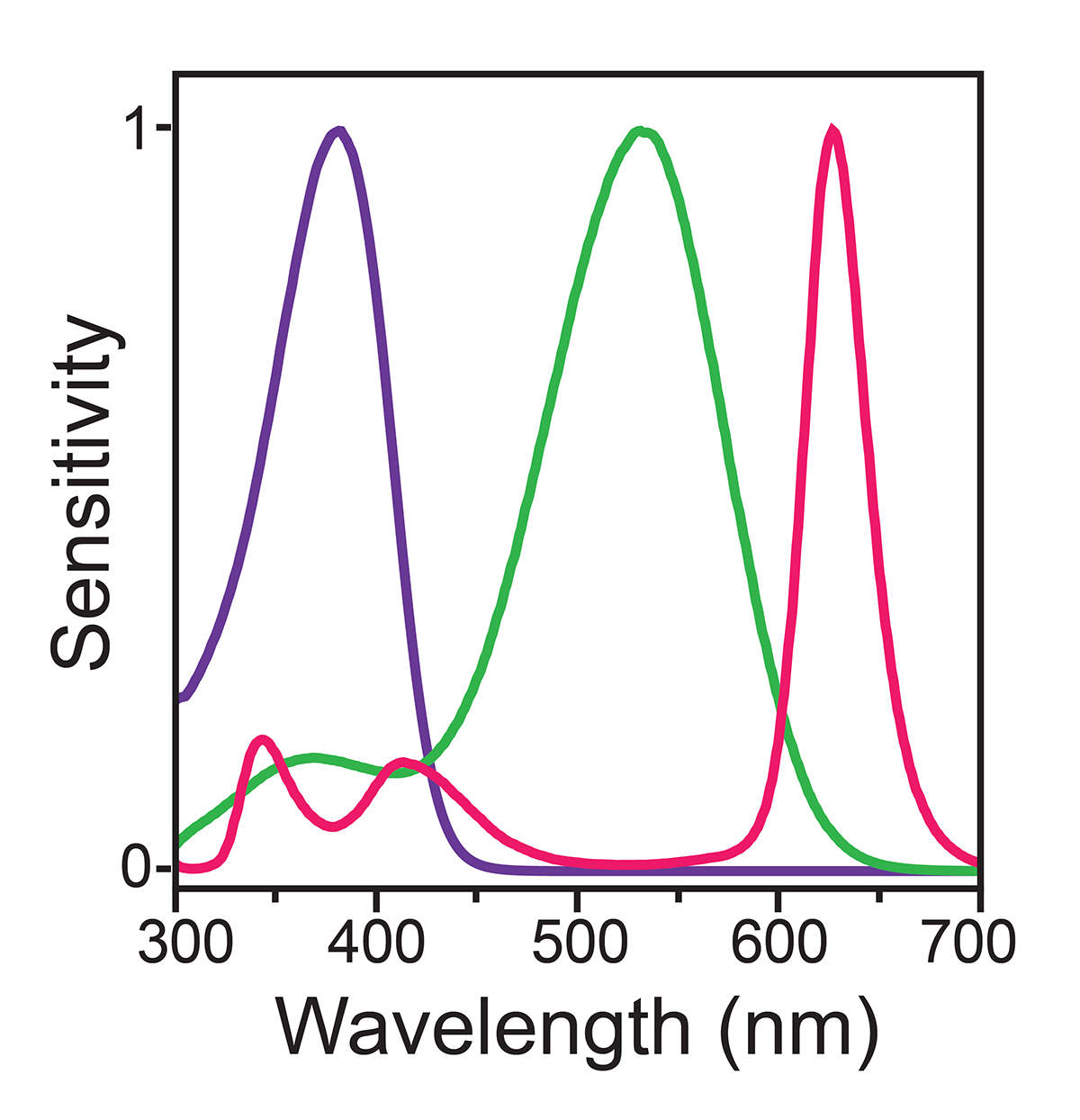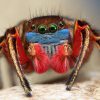Figure 1. Forward facing visual system of a jumping spider, with larger principal eyes (center pair) that provide high acuity and color vision, and smaller secondary eyes (outside pair) that offer a wide monochromatic field of view with moderate acuity and high motion sensitivity. Photo: Thomas Shahan


Figure 2. Color sensitivities of the trichromatic visual system of Habronattus pyrrithrix.
Project Background
Jumping spiders (Salticidae) have extremely well developed eyesight, based on a modular set of four pairs of eyes. Two eye pairs, the lateral or “secondary” eyes, are specialized for wide-field motion detection. In contrast, the large, telescope-like “principal” eyes are extremely acute and support color vision (Fig. 1). Their unusual retinas contain four tiers of photoreceptors in a boomerang-like array, and convey the highest spatial resolution for any animal in relation to body size. Our understanding of how well these eyes see color is relatively poor, however. The few studies on this topic indicate considerable interspecific variation in color vision. We are interested in how and why this variation in color vision has evolved.
Recent Results
In collaboration with the Cronin lab at the University of Maryland Baltimore County, we recently discovered a new mechanism that provides trichromatic vision to members of the colorful salticid genus Habronattus: a red filter that shifts some green-sensitive cells to red-sensitive, like a pair of red sunglasses. This filter results in three color channels (UV, green and red), a prerequisite for “true” color vision (Fig. 2). However, the extent of the spider’s retina that offers this filter-enabled trichromacy is rather limited, suggesting that these animals may need to scan visual scenes to extract color information.
Current Work
We are currently investigating interspecific differences in photoreceptor spectral sensitivity, opsin expression and sequence evolution, and filter absorbance spectra in the genus Habronattus and other salticid genera. We do this with a mix of microspectrophotometry, histology, IHC/ISH and bioinformatics.
The discovery of color vision in a notoriously colorful group of spiders informs some of our other current jumping spider projects. Has this evolutionary event enabled the explosive radiation of species-specific male color ornamentation in the genus Habronattus? Did color vision pre-date the diversification of male color displays, and if so, what selective forces favored it? How has the unique limited-view color vision capability of these spiders influenced the use of color in male courtship since?
Relevant Lab Publications
Zurek, D.B., Cronin, T.W., Taylor, L.A., Byrne, K.**, Sullivan, M., and Morehouse, N.I. 2015. Spectral filtering enables trichromatic vision in colorful jumping spiders. Current Biology, 25(10), R403-R404. PDF
- Press coverage: National Geographic, Science, Smithsonian, LA Times, ScienceDaily, Science World Report, EurekaAlert!, Spiegel Online (German), Neue Zürcher Zeitung (German), Die Welt (German), 人民网 (Chinese), N+1 (Russian), SINC (Spanish), Vozpópuli (Spanish), n-tv (German), The Scientist, I F-ing Love Science, Examiner.com, NYC Today, Phys.org, Digital Journal, Futurity, Sci-News, redOrbit, Pitt News
Taylor, L.A., Maier, E.B.**, Byrne, K.J.**, Amin, Z.** and Morehouse, N.I. 2014. Colour use by tiny predators: Jumping spiders show colour biases during foraging. Animal Behaviour, 90, 149-157. PDF
- Press coverage: SciLogs
**undergraduate authors


